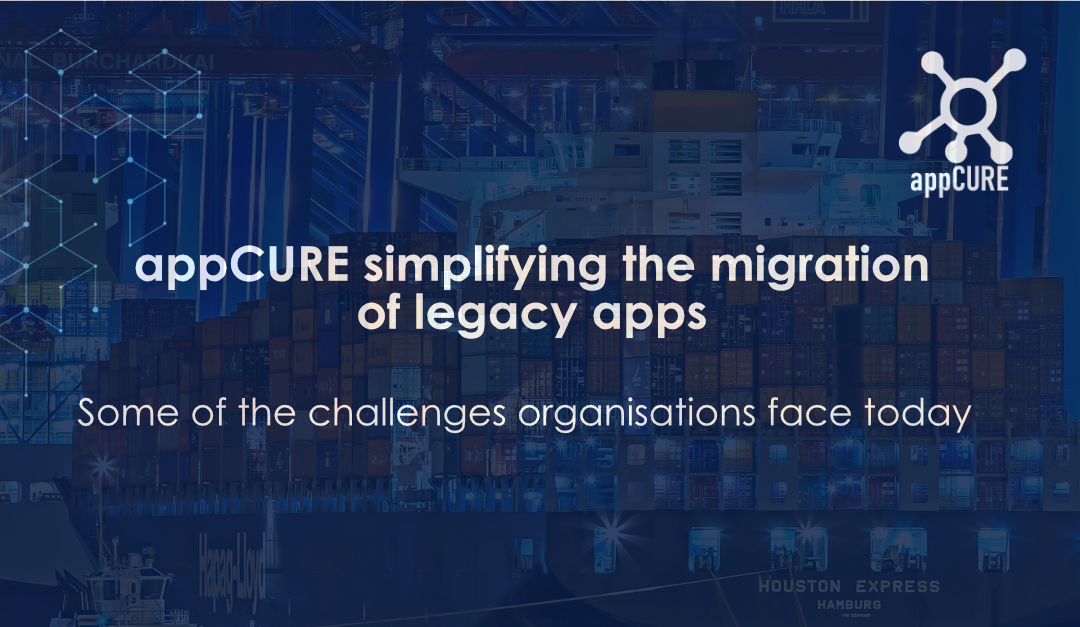Introduction
The end of support of older operating systems is inevitable. Time moves on and software vendors progress their products, features and capabilities. The fundamental challenge with this has always been the complexity of migrating applications. Some Organisations invest heavily in custom internal software development and rely on this software for business administration, manufacturing, finance and many other scenarios. Organisations also rely on the continuation of this software and can sometimes face challenges when the Operating system that the application runs on becomes End Of Life (EOL).
Other challenges organisations face is the time to redevelop or migrate to the new/future workspace also referred to as elongated project times. So what can you do, what are your options? In this article, We will explore the options today and how you use appCURE to help move older applications to the modern workspace.
Let’s first look at the myths surrounding 16-bit apps.
16-bit
The myth of not being able to run 16-bit applications on a 64-bit operating system is banded around a lot today. Native support for 16-bit applications is not supported on a 64-bit operating system however, there are techniques that can be used to emulate the instruction set. You can even emulate 8-bit applications however it’s understood there is a minute requirement for these types of apps.
What about Type-2 Hypervisors, is this a valid solution?
Type-2 Hypervisors
Do you need to run your older applications within a virtual machine? You can do this however this presents a number of potential challenges/risks:
- Using an out of support operating system presents security risks and may cause your organisation to fail security assessments like Cyber Essentials.
- Resource bloat as in you have to run the application on an operating system outside of your day to day device.
- Security and access considerations for access to the application through the older operating system as well as something called VM escape.
- IT support and maintenance of the type-2 hypervisor.
- Third-party container-based hypervisor vendor lock-in and additional costs including custom image services to create the Virtual Image.
What’s about other packaging formats like App-V, lets now take a look briefly at App-V.
Can you use App-V
App-V packages can be used to package older applications and deliver them to a supported App-V environment. The use of App-V is not as simple as one may assume, there are a set of requirements to use App-V. You can read more about the requirements here.
The other important point to note when it comes to App-V is that there is now a end of life roadmap which has been stipulated by Microsoft. You can read more here.
We now move on to looking at MSIX which is the big brother of App-V, aka the replacement.
MSIX and MSIX app attach
MSIX has been coined as the modern application packaging format. With all-new technology and progressive things, it takes a bit of time to get to the utopia objective. The supportability for applications is improving with the use of MSIX. Microsoft focuses their time developing and improving the support and capabilities of MSIX and there have been significant improvements since its first launch. Naturally, some don’t like change and do not believe MSIX is ready to be the mature solution however appCURE and other Microsoft packaging partners will very much disagree with some of the comments within the IT Industry.
MSIX offers the capability of running your applications natively using the operating system’s API’s. MSIX works by running the application inside a lightweight container and by doing so, it effectively limits what the application can do. This is great for security. However, depending on how the app has been developed, functionality out of the box may be problematic in some cases. An application within an MSIX container can read the global operating system’s registry and file system however it can only write to its own virtual application data folder and own virtual registry.
Packaging older apps within an MSIX package provides security benefits and you can control the behaviour of the application in terms of what it can do within the operating system. It is also important to note that MSIX has been designed to address the challenge of Winrot which is a term used for when you uninstall an application and remnants of application files remain on the OS. It is important to note that you can only achieve a clean uninstall if the application has been packaged correctly and the correct use of the package support framework has been applied. What I mean by this is, if you use PSF to write files on launch outside of the MSIX container, it will not remove them on the uninstall as those files are outside the container.
The use of MSIX enables the use of Dynamic application delivery (MSIX app attach) for Azure Virtual Desktop and other Virtual Desktop environments. This opens up options to organisations and presents new ways of delivering apps like self-service, on-demand and simpler app management for desktop virtualisation. It is also important to note that you can today use MSIX with VMware App Volumes on version 4 where VMware have rearchitected their App volumes product to produce high packaging success rates.
How can appCURE help
appCURE specialise in application migration and transformation. We use a number of different application packaging methods as well as create intuitive ways to get your applications running on a modern workspace.
Have a look at the video below of appCURE running the 1982 game Paratrooper within an MSIX and MSIX app attach using CIMFS.
Summary
In this article, we touched on the challenges associated with migrating older applications to a modern workspace, some of the solutions out there, myths and the value of MSIX. We finished off by looking at a 1982 game Paratrooper running as an MSIX and MSIX app attach.
Check out our legacy page here where cover some of the capabilities appCURE has to offer.
Other references:
Risk of legacy apps – article by info security Magazine.com
ITPRO.co.uk -The Windows 10 migration legacy application problem
Techtarget – Virtual Machine Escape
Contact us at info@appcure.io to find out more…

